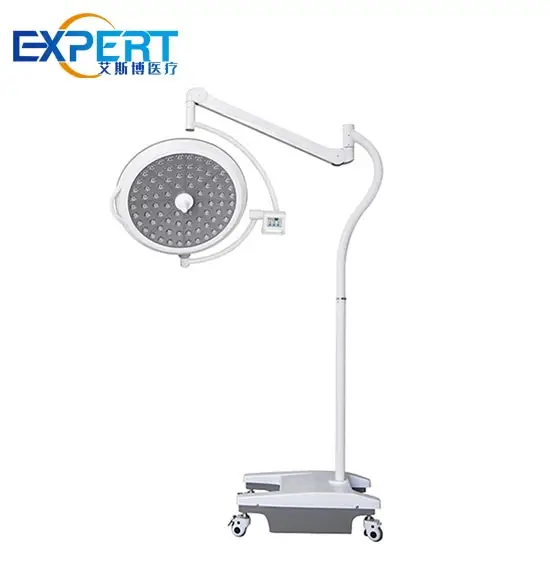Adresse
304, rue Cardinal Nord
Centre Dorchester, MA 02124
Heures de travail
Du lundi au vendredi : 7h - 19h
Week-end : 10h - 17h

Surgical lamps are essential tools in modern operating rooms, providing critical illumination that enhances visibility and supports surgical precision. This blog explores the multifaceted benefits of surgical lamps in improving overall operating room efficiency and patient outcomes.
Surgical lamps are designed to provide intense, shadow-free illumination to the surgical field. They typically consist of a light source, reflectors, and optical elements that optimize light distribution.
Components of a Surgical Lamp Surgical lamps commonly feature advanced light sources such as halogen bulbs or more recently, LEDs (Light Emitting Diodes). These sources are paired with sophisticated reflectors and optics to direct and focus light effectively onto the surgical site.
Types of Surgical Lamps There are several types of surgical lamps available, each offering unique advantages. Traditional halogen lamps have been widely used for their brightness and color rendition, while LED lamps are gaining popularity due to their energy efficiency and longer lifespan.









LED surgical lamps consume significantly less energy compared to traditional halogen lamps, resulting in reduced operating costs and environmental impact.
Comparison of Energy Consumption LED lamps typically use 50-60% less energy than equivalent halogen lamps while providing comparable or better illumination quality.
Longevity and Maintenance LED lamps have a much longer operational life, often exceeding 50,000 hours. This reduces the frequency of lamp replacements and associated maintenance costs.
Modern surgical lamps are designed to be highly adjustable, allowing surgeons to position the light precisely where needed without compromising sterility or obstructing workflow.
Mobilité et positionnement Flexible arms and maneuverable heads enable surgeons to adjust the lamp’s position dynamically during procedures, enhancing visibility and reducing shadowing.
Sterility Considerations Surgical lamps are engineered to maintain sterility in the operating room environment. Features such as smooth surfaces and sealed housings facilitate easy cleaning and disinfection.
Accurate color rendition and appropriate color temperature are crucial for distinguishing tissues and enhancing visual contrast during surgery.
Importance of Color Temperature Surgical lamps with adjustable color temperature settings allow surgeons to customize lighting conditions based on procedural requirements, optimizing visual clarity.
CRI (Color Rendering Index) Values High CRI values ensure that surgical lamps render colors accurately, crucial for identifying subtle tissue variations and anomalies.
Modern surgical lamps are designed to integrate seamlessly with other operating room technologies, including camera systems, monitors, and surgical navigation systems.
Integration with Camera Systems Some surgical lamps feature built-in cameras or provisions for camera attachment, enabling live streaming of surgical procedures for educational or documentation purposes.
Connectivity and Control Advanced models offer wireless connectivity and intuitive control interfaces, allowing surgeons to adjust lighting settings remotely or via touchscreens during procedures.

While LED surgical lamps may have higher initial costs compared to halogen lamps, their long-term savings in energy consumption and maintenance expenses make them cost-effective investments over time.
Initial Costs vs. Long-term Savings Calculating total cost of ownership involves considering initial purchase price, operational costs (energy and maintenance), and projected lifespan of the lamp.
Exigences d'entretien LED lamps require minimal maintenance compared to halogen lamps, primarily periodic cleaning and inspection to ensure optimal performance and longevity.
Lampes chirurgicales are integral to modern surgical practices, offering advanced illumination solutions that enhance operating room efficiency, surgical precision, and patient safety. Their evolving technology and ergonomic designs continue to redefine standards in surgical lighting, supporting healthcare professionals in delivering optimal care.
Q : Quelles sont les principales caractéristiques à prendre en compte lors du choix d'un surgical lamp?
A:Factors such as light intensity, color rendering capabilities, adjustability, and compatibility with other equipment are crucial when selecting a surgical lamp.
Q:How do LED surgical lamps differ from traditional halogen lamps in terms of performance?
A:LED lamps offer superior energy efficiency, longer lifespan, and adjustable color temperature settings compared to halogen lamps, contributing to enhanced surgical precision and cost savings.
Q : Sont lampes chirurgicales compatible with existing surgical equipment and infrastructure?
A:Most modern surgical lamps are designed to be compatible with standard operating room infrastructure, including surgical tables, ceiling mounts, and integration with camera and imaging systems.
